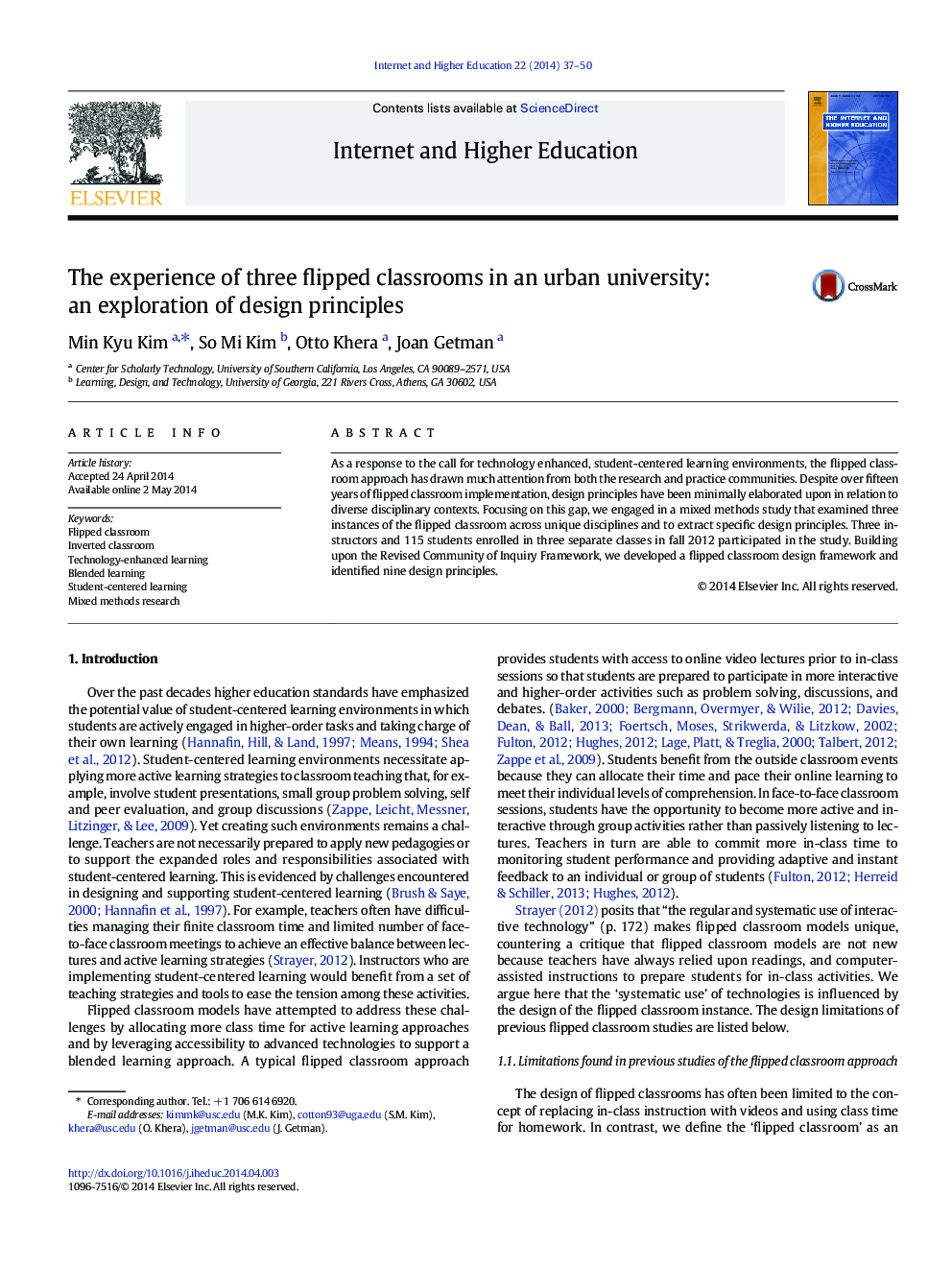| کد مقاله | کد نشریه | سال انتشار | مقاله انگلیسی | نسخه تمام متن |
|---|---|---|---|---|
| 357710 | 619942 | 2014 | 14 صفحه PDF | دانلود رایگان |
• This study engaged in a mixed research methods that rendered useful data on discipline-specific flipped classroom applications.
• Building on the Revised Community of Inquiry framework, a design framework for the flipped classroom emerged.
• This study proposes nine design principles for the flipped classroom on the basis of the design framework that emerged from the data.
As a response to the call for technology enhanced, student-centered learning environments, the flipped classroom approach has drawn much attention from both the research and practice communities. Despite over fifteen years of flipped classroom implementation, design principles have been minimally elaborated upon in relation to diverse disciplinary contexts. Focusing on this gap, we engaged in a mixed methods study that examined three instances of the flipped classroom across unique disciplines and to extract specific design principles. Three instructors and 115 students enrolled in three separate classes in fall 2012 participated in the study. Building upon the Revised Community of Inquiry Framework, we developed a flipped classroom design framework and identified nine design principles.
Journal: The Internet and Higher Education - Volume 22, July 2014, Pages 37–50
